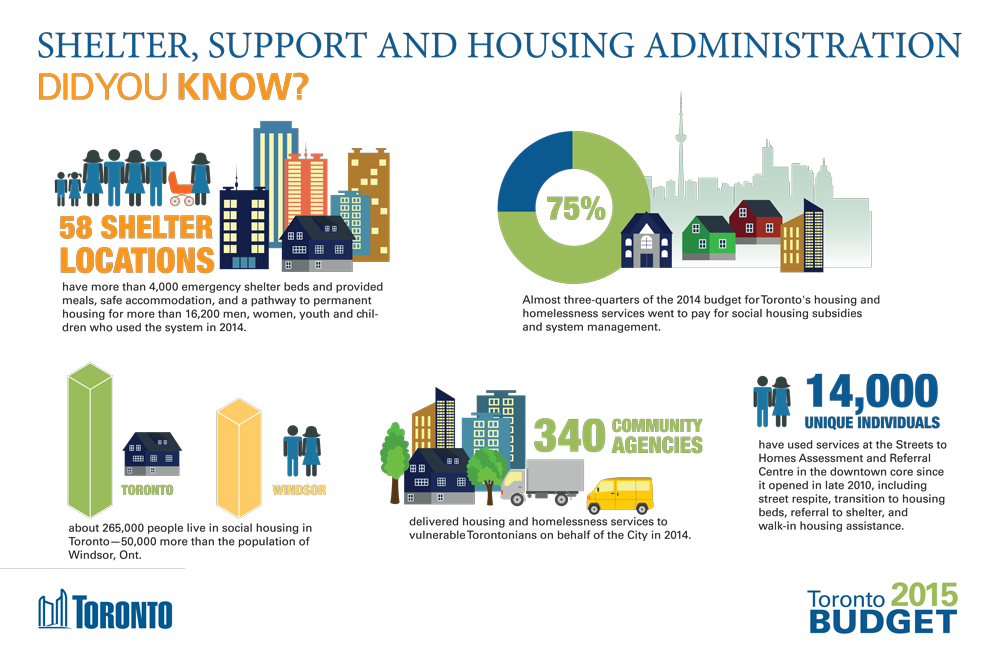The rising cost of housing in major cities across Canada has pushed many families and individuals into critical housing situations. There is a growing need for municipalities to be involved in the support, advocacy and operation of programs that help vulnerable populations find temporary and permanent housing. The below infographic, published as part of Toronto’s 2015 Budget Report, provides facts about shelters, supports and housing administration in the city.
An estimated 265,000 people live in social housing in Toronto. That's 50,000 more than the population of Windsor, Ontario. When we consider the size of the population living in social housing, it should not come as a surprise that there are hundreds of community agencies and organizations working together to provide services to these individuals.
The infographic states that there are 58 shelters in Toronto and together they operate over 4,000 emergency shelter beds. The shelter’s role extends far beyond providing individuals with a temporary place to sleep; they also provide access to food, resources, and pathways to long-term housing solutions.
Many of these shelters are specialized; this means that they have targeted supports for specific sub-populations of families living in homelessness, such as of women and children fleeing domestic violence.
There has been growing support in recent years for the development of a specialized shelter to meet the needs of LGBTQ2 youth living in Toronto. LGBTQ2 youth are over-represented in Toronto's homeless population and it has been estimated that 25-40% of homeless youth identify as being LGBTQ2. The 2015 Toronto budget includes a historic first for the city: two planned spaces, numbering 54 shelter beds in total, for homeless LGBTQ2 youth. These spaces are urgently needed as these youth have often been subject to violence and discrimination within the shelter system as a result of homophobia and transphobia.
The budget has also allocated funds for the opening of two 24-hour drop-in centers for women living in critical housing situations. Women living in homelessness are at much higher risk of being victims of violence, especially sexual violence, than men living in homelessness. The opening of these drop-in centers demonstrates the city's growing interest in meeting the needs of its most vulnerable populations.
While this is uplifting news, we also need to consider how Canada as a whole can start investing more in long-term solutions to homelessness, with solutions like Housing First. While permanent housing and wrap-around supports for individuals living in homelessness may seem expensive at first, research has shown that Housing First is highly cost-effective in the long run compared to traditional responses to homelessness. Since positive results have been replicated in many trials, Housing First is widely considered a "best-practice" in the field. By continuing to spread awareness and advocating for research-informed policies and practices, we can continue to make ground in the fight to end homelessness


